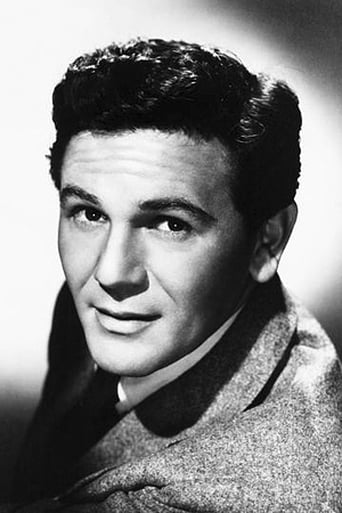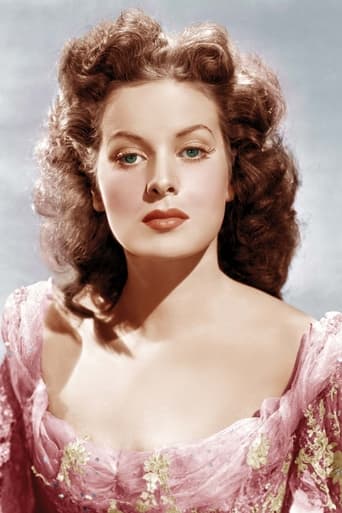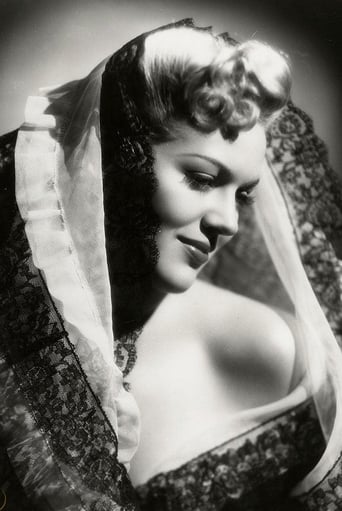Dorian Tenore-Bartilucci (dtb)
Novelist Dorothy B. Hughes built a good head of paranoia and suspense in her 1942 thriller THE FALLEN SPARROW (TFS), and RKO masterfully and faithfully adapted the 1943 movie version. Director Richard Wallace, screenwriter Warren Duff, and editor Robert Wise condense the novel's events and complex relationships without watering it down.Starting with the quote "...in a world at war many sparrows must fall...", the film brings us into the mindset of troubled yet determined hero John "Kit" McKittrick (John Garfield). Kit's boyhood friend Lt. Louie Lepetino had helped him escape the Spanish prison where he'd been tortured for two agonizing years after the Spanish Civil War. Returning to New York City from a ranch rest cure, Kit's stunned to discover that Louie's been killed in a 12-story fall from a window at a swanky party for wartime refugees Dr. Skaas (Walter Slezak) and his nephew Otto (Hugh Beaumont, pre-LEAVE IT TO BEAVER). Hell-bent on proving Louie's death was neither accidental nor a suicide, Kit starts sleuthing, with help from pal Ab Parker (Bruce Edwards). Kit's grim goal: killing Louie's killer.Kit's suspects include just about everyone in his upscale circle of friends, especially the women, since he's sure only a dame could've gotten close enough to Louie to shove him out a window. Was it Kit's alluring old flame Barby Taviton (brunette Patricia Morison may not look like the blonde Barby described in Hughes's book, but she's got the sophistication and entitled attitude)? Lovely, sad-eyed refugee Toni Donne (Maureen O'Hara in a change-of-pace role; more on that shortly)? Ab's young songbird cousin Whitney Parker, affectionately known as "Imp" (appealing Martha O'Driscoll. By the way, this character's name was "Content Hamilton" in the novel, but I like her new name better)? Kit's biggest obstacle: he has what we now call Post-Traumatic Stress Disorder. He's still haunted by the memory of the mysterious man from Franco's elite Nazi squad, a limping man who tortured Kit in his dark cell, trying to make him reveal where he'd hidden his regiment's battle standard. (In the novel, the McGuffin was a set of fabulous Babylon goblets the defiant Kit took from the enemy. The goblets are in the film, but the script emphasizes that battle flag and the symbolism behind it.) Even now, Kit struggles against fear as he imagines hearing the drag and thump that signaled his sadistic tormentor's arrival -- or IS he imagining it? Terror mounts as Kit realizes his enemies may have followed him home, maybe even planting their spies into every aspect of Kit's life, placing not only himself in danger, but also his friends and loved ones...The role of Kit, a working-class, self-described "mug" in gent's clothing (his ex-cop dad struck it rich) with a heart full of all-but-shattered ideals, fits John Garfield like a glove. Garfield's toughness, tenderness, and humor have us rooting for Kit. As in the book, Kit spends lots of time and energy trying to convince himself he's not afraid, only to be proved wrong, to his frustration. Hughes's haunting descriptions of Kit's memories of his horrific Spain ordeal are conveyed well in Garfield's powerful monologue, enhanced by the camera's slow close-up on his expressive face. The sweat on Garfield's brow and the twitch in his cheek as he finally faces his enemy during the climax speak volumes.As Toni Donne, the guarded beauty with a terrible hold over her, lovely Maureen O'Hara (did they darken her red hair, or is it just Nicholas Musuraca's gorgeous black-and-white photography?) tries to downplay her Irish accent, but it still lurks in certain words. While our household loves O'Hara, she wouldn't have been our first choice as a femme fatale, but Toni's inner fear and regret come through in O'Hara's poignant, soulful portrayal, winning my sympathy. O'Hara has great fire-and-ice chemistry with the intense Garfield. In the book, Kit kissed Toni, but with her cautious reserve, she never kissed back with any kind of enthusiasm. In this film version, Kit and Toni finally share longing kisses and tender embraces -- much more fun to watch! :-) Walter Slezak's performance as Dr. Skaas is silkily sinister, though his true evil nature is telegraphed earlier than in the book, with his interest in "the cruelties of men towards other men" and "comparing modern scientific torture with the methods of the ancients" (who apparently didn't mess with victims' heads enough for Skaas). An avuncular hybrid of Sydney Greenstreet, Peter Lorre, and Clifton Webb, Slezak is one of 1940s cinema's most memorable villains.TFS keeps the paranoia percolating and the suspense simmering, even keeping much of the novel's best dialogue, with only minor tweaks. The filmmakers truly evoke the feeling and atmosphere of wintertime World War 2 Manhattan, especially with their use of shadows, light and sound as well as Roy Webb and Constantine Bakaleinikoff's Oscar-nominated score. Today's audiences might not understand Kit's obsession with the battle flag, even with the explanatory scene at Toni's home -- but then again, I bet the men and women fighting overseas will get the significance of a battle standard and what it symbolizes.Although Dorothy B. Hughes's mysteries were best-sellers in her heyday, they seemed to be all but forgotten after she retired to focus on her family. Luckily, the film version of TFS captures her tale of terror beautifully. If you want to read the book, Amazon.com has both new and used paperback editions available so you can rediscover her. Interestingly, the 1988 paperback edition I read had cover art with an uncanny resemblance to, of all things, the movie poster for THE FRENCH CONNECTION!
sol1218
***SPOILERS*** Almost incomprehensible plot that has to do with a Nazi spy ring in the heart of New York City masquerading around as a bunch of refugee European society blue-bloods. Emotionaly disturbed and mentally broken Jon "Kit" McKittrick, John Garfield,is back in New York after a stay at a rest home in Arizona. McKittrick is recovering from the horrors of being held prisoner for two years in a Nazi-like prison camp, in Spain. McKittrick finds out ,through an old newspaper clipping, that his old friend and NYPD cop Let. Louie Lepitino had killed himself while he was away recovering in the Arizona rest home. It was Louie who helped get Kit out of the Fascist prison camp in Spain a year earlier. Kit is now sure that Louie's tragic death wasn't an accident, it was murder. Having been captured at the end of the Spanish Civil War were he fought the Spanish Fascists forces of Francisco Franco Kit was put under extreme torture by his captors to find something that he hid from them before he was apprehend. Unknown to the Fascists the item is safely locked up in a secret Libson Portugal bank safe deposit box. With all the sub-plots and double-crossing in the movie "The Fallen Sparrow" you never get a handle to what these cryptic-Nazis, hiding behind the facade of Spanish and French Royality, want from the poor and mentally unbalanced Kit McKittrick. Were given information from Kit,in what looks like a drug induced stupor, that he was involved in the death of a top German general in the Spanish Civil War. This general was a close friend and fellow 1923 Beer Hall putsch veteran of Adolf Hitler himself. It was Hitler who then ordered the Gestapo and Nazi agents to track down every member of this anti-Fascist brigade, responsible for the German Generals death. The Gestapo and it's agents in the US were not only told have them killed but to find the brigade pennant, or official flag, which only Kit knew where it is: In the Libson's bank safe deposit box. Increidably complicated and convoluted plot that you just give up on almost half way through the movie. Kit's all over the place looking for this lame or club footed Nazi doctor, like the one-armed man in the TV show "The Fugitive", who's now the Nazi agent out to get him to talk about where the pennant is and, after getting the information from Kit, then murder him. This Nazi is also the man who Kit remembers back from his time in the Spanish prison from the sounds he made when he walked. Kit never saw him. It later comes out that everything that happened to Kit from the time he left Arizona to when he got to New York was all planned, ahead of time, by this group of pseudo-aristocratic Nazis themselves. Like a boat in a thick fog at sea the movie just limps along making little if any sense at all as it reaches it's totally unbelievable climax. Kit finally finds out not just who was behind the death of policemen Louie Lepitino, it turns out that Louie didn't kill himself like Kit suspected, but the murder of his close friend and Washington insider Ab Parker, Bruce Edwards. I thought that it was a bit egotistical of Kit to think that the German Fuhrer Adolf Hitler himself took such a deep interest in him to the point of forgoing his responsibility of conducting the German military in WWII against the allies. An obsession on Hitler's part which, if you take Kit and the movie "The Fallen Sparrow" seriously,eventually cost him the war.The relationship between Kit and mystery women Toni Donne, Maureen O'Hara,also took a great strain on your thought processing mechanisms. You never for once know just what Toni's role in this half cocked scheme as well as her involvement with these Nazis really is? You get at least three different explanations from her in the movie to just what Toni's role is in all this none of which make any sense at all! The Nazi spies are headed by this off-the-wall torture fixated psycho Dr. Christian Skaas, Walter Slezak. Dr. Skass brain-addled sidekick is the former, or what he thinks he is, French monarch as well as the bluest of European blue-bloods Prince Fracois De Namur played by veteran Jewish Yiddish theater actor Sam Goldenberg.
denscul
When this movie was made, Stalin had pulled out his support for the Spanish Civil War, had made a pact with Hitler, and took his share of Poland in 1939. Most intellectual Communists in the USA could not acept Communism as its future, and most Americans who fought in the Civil War lost thier passionate fervor. Therefore, the plot on which this movie stands is sheer propaganda made to fit the American view of the world in 1943. As a movie, the acting and dialog are excellent, however the plot is absurd. Of all the dictators and "elected" heads of state in the 20th century, Franco was modestly evil compared to those men who lead the world in the middle of the 20th century.





